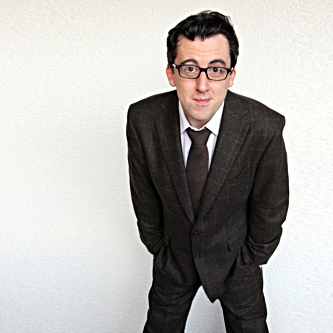A design I recently worked on called for a scrollbar which only took up half the height of the area it was scrolling. Now, I'm not going to get into a discussion about scroll behaviour, accepted standards or user expectations - fascinating though that would be - instead, Here's a jquery plugin.
The existing jQuery plugins I found that dealt with scrollbars created their own custom, themable bars. jScrollpane, for instance, gives you complete control over pretty much every aspect of the look and feel of the scrollbar. I figured this was too much for my needs, all I wanted was to be able to anchor the scrollbar to a given corner and change its height. The resulting plugin does just that. It even handles OS X Lion's disappearing scrollbars natively, too.
Usage
Note: This currently only works on vertical scrolling and doesn't have a good jQuery setup and teardown. If I needed it more than once on a page, I'd have written it a bit more robustly so it could be used more than once. Maybe I'll leave that task as an exercise for the enthusiastic reader.
If you call the plugin on an element with a scrollbar (i.e. the element has height and contains content that overflows), it will duplicate the scrollbar using the standard browser scrollbar and get rid of the original one. In fact, in its default configuration, there's pretty much no difference between using the plugin and not using it.
$(element).detachScrollbar();It becomes more useful, however, when you pass in a couple of options. This example will move the scrollbar to the left of the content area:
$(element).detachScrollbar({anchor : 'topleft'});You could leave the scrollbar on the right but shrink it downwards:
$(element).detachScrollbar({anchor : 'bottomright', height : '50%'});The only behaviour of a standard scrollable area that isn't replicated by default is being able to use the mouse wheel to scroll while over the content area. If you want this behaviour (and you probably do), all you need to do is include the jQuery Mousewheel plugin in your page. This script will recognise if it's available and enable the functionality.
How it works
The script creates a container div around the original scrollable content and sets that to overflow:hidden while setting the original area to height:auto. This means that the original scrollbar disappears. It then creates another invisible div the same height as the original content and wraps that in a div with overflow-y:scroll, this creates a scrollbar that looks exactly like the original one. Add in some clever event trickery to tie the scroll position of one to the scroll position of the other and we're done. We've replicated the original functionality but can now control the styles applied to the scrollbar completely separately from the original content. This means we can position it to the left or above, maybe add a 90° CSS transform and have it look like a horizontal scrollbar, anything you like.
The plugin also incorporates “Cowboy” Ben Alman's scrollbar width plugin to make sure we're matching dimensions on whatever platform this is used on.
The options that can be passed in are:
internal: true / false (default: true)
autoposition: true / false (default: true)
anchor: 'topleft' / 'topright' / 'bottomleft' / 'bottomright' (default: 'topright')
height: Any CSS length (default '100%')Advanced usage
The autoposition option allows you to decide whether to let the plugin handle the layout (which you probably do for most cases) or whether you want to specify everything yourself using the provided classes as styling hooks.
The other option, internal, determines the DOM structure. Specifically, it says whether everything is contained within the one element or whether the scrollbar is separate. Specifying internal: false would allow you to put the scrollbar anywhere on your page. You could have all scrollbars set as position: fixed along the top of the page if you wanted. Not sure why you would but you could.


